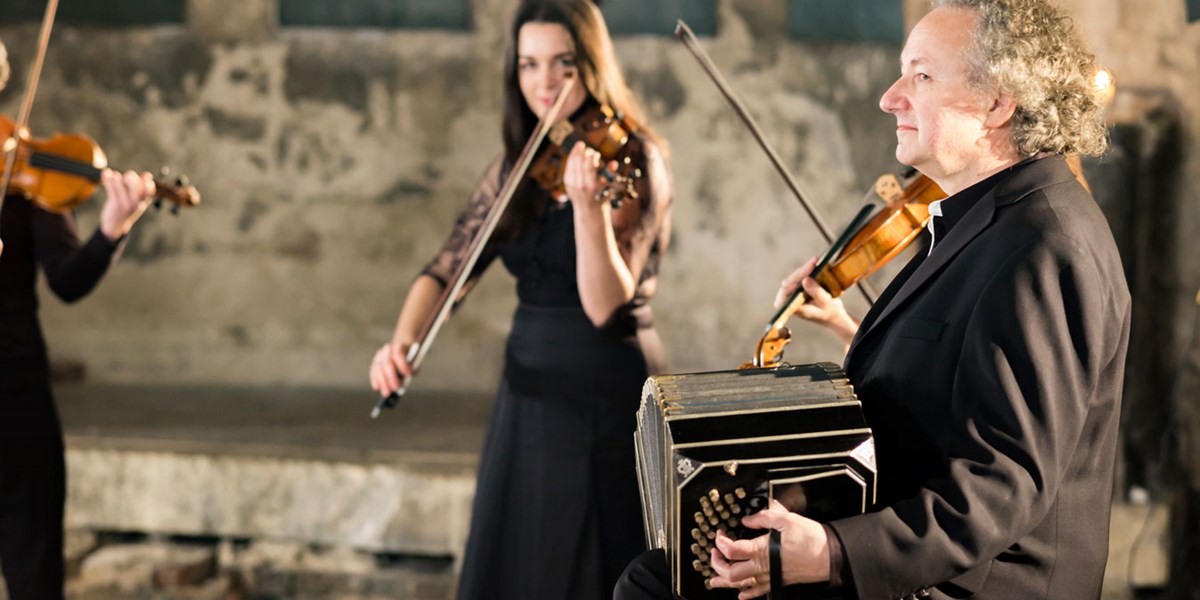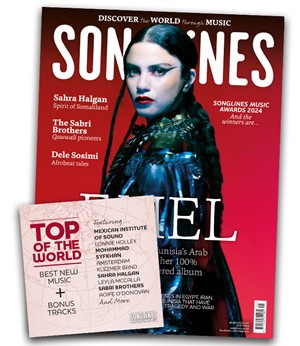Sunday, March 21, 2021
Bandoneón | Musical Instrument Guide (with Julian Rowlands)
By Chris Moss
Chris Moss talks to Tango Siempre’s Julian Rowlands about his chromatic ‘cuckoo clock’ and how he came to the bandoneón

The bandoneón – or button accordion – is the soul of tango. It can sound as heavenly as a church organ and as mundane as a police siren. It’s often a substitute for strings, percussion and even vocals. In the hands of Astor Piazzolla, the foremost bandoneonist of modern times, it can sound erotically charged. ‘Ché, bandoneón,’ runs an old tango. ‘Your song is the love that wasn’t given.’
Why, then, don’t more people play it? British bandoneonist Julian Rowlands, offers a few reasons: “The layout of buttons is completely illogical. It started off as a diatonic [white keys only] instrument like the Anglo concertina, but as the range was extended, buttons were added in a seemingly random order.”
“With concertinas, you get a scale by going suck-blow-suck-blow. On a bandoneón, all the notes, black and white, are available sucking or blowing, which means the whole purpose of the original arrangement of notes has become redundant. What you have is an instrument where each scale has a different pattern in each octave, and different again depending if you are sucking or blowing, and the left hand is also completely different to the right. On most normal musical instruments, you have a sense of going up or down the scale on adjacent keys or finger positions, but on the bandoneón everything is a series of higgledy-piggledy patterns that don’t replicate. In fact, if you start to see a pattern it’s time to take a break and have a lie down.”
Rowlands studied music at Southampton University and got involved in tango music 20 years ago as a founder member of the band Tango Siempre with Ros Stephen (his partner), Pete Rosser, Jonathan Taylor and Frances Dorling. “There was very little tango music in the UK at the time, so there was quite a steep learning curve to explore what is a very sophisticated and extensive musical culture,” he explains.
“I bought a bandoneón on eBay, which was a punt, but it turned out to be quite a usable instrument. The band did some work with the French-based Argentinian bandoneonist Hugo Victor Villena. I was captivated by his musical personality and the expressive range of the instrument. I wanted to write music for it and so I started to learn to play, thinking, ‘how hard can this be?’ But the bandoneón demands a certain commitment, and before long I became obsessed and was practising 12 hours a day, seven days a week.”
Previously, Rowlands had played violin, viola and piano, but never settled on one as his main instrument. “While I liked being able to play lots of notes at the same time on keyboards, I also valued the constant expressive contact with the sound that one has on bowed strings. Bandoneón combined both those features in what was for me an ideal instrument.”
“My main instrument now is an Alfred Arnold [active 1911-1949] that was manufactured in Saxony during World War II. At that time the British blockade prevented these instruments from being exported to Argentina, and so it stayed at the factory until it was expropriated by the authorities at the time of the communist takeover in East Germany. This bandoneón was apparently given to an employee in lieu of wages, and then found its way to Argentina. It is in original condition and I am still really playing it in; it is a quite extraordinary instrument. I also have another Alfred Arnold from about 1937, and a modern instrument by Uwe Hartenhauer with a wider range than the standard tango layout – very useful for everything from Bach to Kurt Weill and contemporary scores.”
The inner workings are made from wood with long zinc reed plates, and many steel reeds on each plate that are pinned into the frames and not waxed. “It means that the expressive vocabulary is quite different from an accordion,” says Rowlands. “Notes overblow under pressure, and there is a very big variety of timbre depending on volume and which direction you are moving the bellows, which might seem like a fault but is one of the keys to the sound. The bandoneón imparts a highly expressive melancholy to a melody, with a constantly changing timbre and a vibrato that is produced by the player and not automatic. The other key quality is the rhythmic drive that comes from bouncing the instrument so that each attack overblows the reeds – the ‘chan-chan’ sound of the tango marcato rhythm.”
“I like to say that whereas a good Italian accordion is a fine piece of precision engineering like a Ferrari or Maserati, a bandoneón is more like a cuckoo clock. But it is this relative lack of sophistication that gives the instrument its palette.”
➤ This article originally appeared in Songlines #140. Find out more about subscribing to Songlines

